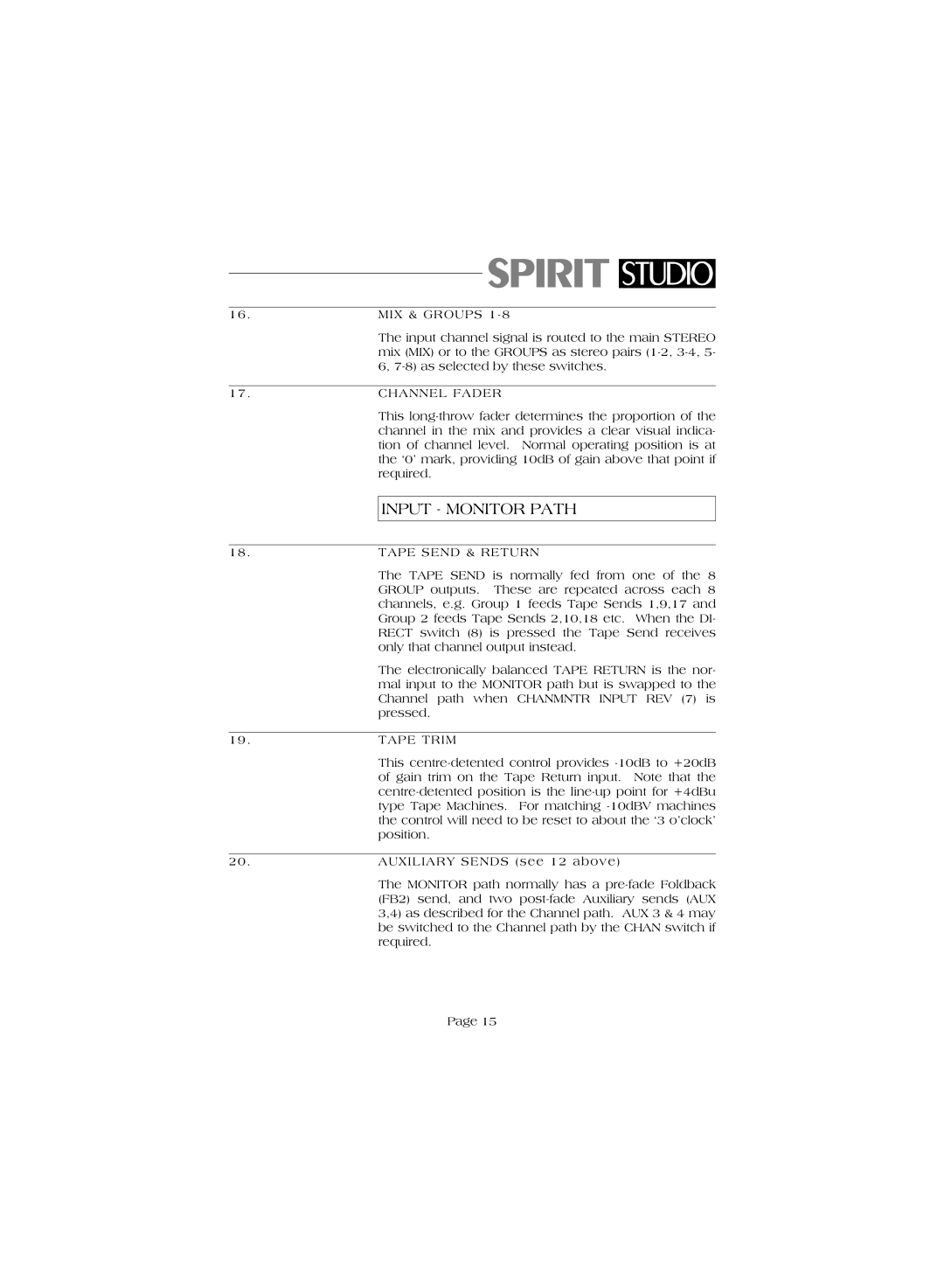
16. | MIX & GROUPS |
| The input channel signal is routed to the main STEREO |
| mix (MIX) or to the GROUPS as stereo pairs |
| 6, |
|
|
17. | CHANNEL FADER |
| This |
| channel in the mix and provides a clear visual indica- |
| tion of channel level. Normal operating position is at |
| the ‘0’ mark, providing 10dB of gain above that point if |
| required. |
|
|
| INPUT - MONITOR PATH |
|
|
|
|
18. | TAPE SEND & RETURN |
| The TAPE SEND is normally fed from one of the 8 |
| GROUP outputs. These are repeated across each 8 |
| channels, e.g. Group 1 feeds Tape Sends 1,9,17 and |
| Group 2 feeds Tape Sends 2,10,18 etc. When the DI- |
| RECT switch (8) is pressed the Tape Send receives |
| only that channel output instead. |
| The electronically balanced TAPE RETURN is the nor- |
| mal input to the MONITOR path but is swapped to the |
| Channel path when CHANMNTR INPUT REV (7) is |
| pressed. |
|
|
19. | TAPE TRIM |
| This |
| of gain trim on the Tape Return input. Note that the |
| |
| type Tape Machines. For matching |
| the control will need to be reset to about the ‘3 o’clock’ |
| position. |
|
|
20. | AUXILIARY SENDS (see 12 above) |
| The MONITOR path normally has a |
| (FB2) send, and two |
3,4) as described for the Channel path. AUX 3 & 4 may be switched to the Channel path by the CHAN switch if required.
Page 15
